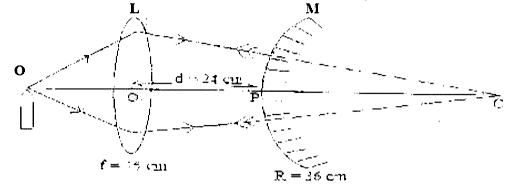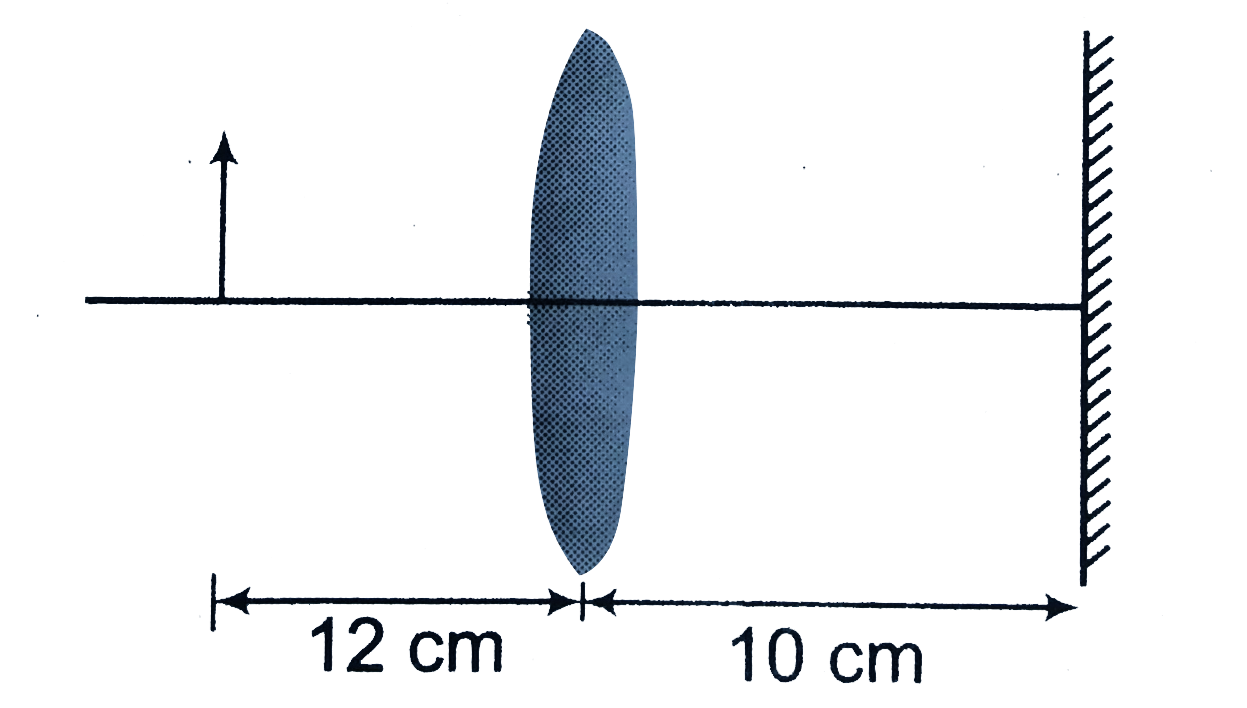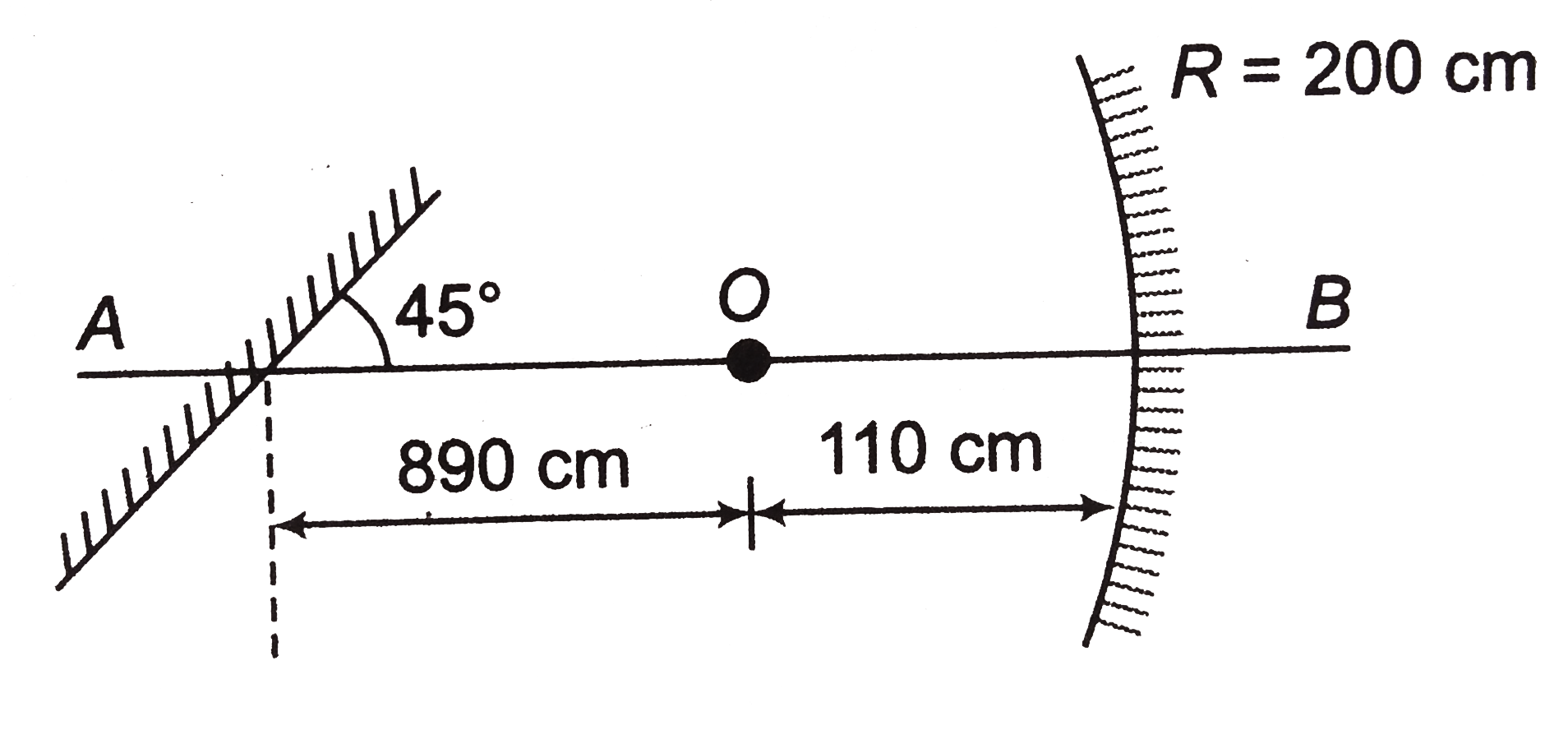A convex lens .L. and a plane Mirror .M. are arranged as shown in figure below. Position of object pin .O. is adjust in such a way that the inverted image .I. formed by the lens mirror combination, coincides with the object pin .O.. Explain how and when this happens.
To solve the problem, we need to understand the behavior of light as it passes through a convex lens and reflects off a plane mirror. The key points to consider are the position of the object, the nature of the image formed by the lens, and the role of the mirror.
1. Identify the Components: We have a convex lens (L) and a plane mirror (M). The object pin (O) is placed in front of the lens.
2. Position of the Object: The object pin (O) is adjusted to be at the focus (F) of the convex lens. The focal point of a lens is the point where parallel rays of light converge after passing through the lens.
3. Light Rays from the Object: When light rays emanate from the object pin (O) placed at the focus of the convex lens, they diverge as they travel towards the lens.
4. Refraction through the Convex Lens: As these diverging rays pass through the convex lens, they are refracted. Since the object is at the focus, the rays will emerge from the lens as parallel rays.
5. Reflection from the Plane Mirror: The parallel rays then travel towards the plane mirror (M). Upon reaching the mirror, these rays reflect back.
6. Convergence of Reflected Rays: After reflection, the parallel rays converge back towards the focus of the convex lens. Since the object was initially at the focus, the reflected rays will converge back to the same point where the object pin (O) is located.
7. Formation of the Inverted Image: The result of this process is that the inverted image (I) formed by the lens-mirror combination coincides with the position of the object pin (O). Thus, the image is formed at the same location as the object, but it is inverted.
Conclusion:
This phenomenon occurs specifically when the object is placed at the focus of the convex lens. The rays become parallel after passing through the lens and converge back to the focus after reflecting off the plane mirror, resulting in an inverted image coinciding with the object.
---
This phenomenon occurs specifically when the object is placed at the focus of the convex lens. The rays become parallel after passing through the lens and converge back to the focus after reflecting off the plane mirror, resulting in an inverted image coinciding with the object.
Similar Questions
A convex lens .L. and a plane Mirror .M. are arranged as shown in figure below. Position of object pin .O. is adjust in such a way that the inverted image .I. formed by the lens mirror combination, coincides with the object pin .O.. Explain how and when this happens.
View SolutionAn optical system consists of a thin convex lens ‘L’ of focal length f = 15 cm and a convex mirror M having radius of curvature R=36 cm, arranged co-axially, at a distance of 24 cm. (See Figure below).
Where should an object O be kept so that its inverted image I formed by the lens mirror combination coincides with the object itself?

View SolutionAn object, a convex lens of focal length 20cm and a plane mirror are arranged as shown in the figure. How far behind the mirror is the second image formed?

View SolutionHow is the position of image formed by a plane mirror related to the position of the object ?
View SolutionA plane mirror and a concave mirror are arranged as shown in figure and O is a point object, Find the position of image formed by two reflection, first one talking place at concave mirror.

View Solution
When object O moves towards a fixed lens mirror combination, select correct choice/choices:
View SolutionA convex lens of focal length 30 cm , a concave lens of focal length 120 cm , and a plane mirror are arranged as shown . For an object kept at a distance of 60 cm from the convex lens, the final image, formed by the combination , is a real image , at a distance of :
_E01_195_Q01.png)
|Focal length|=|Focal length|
= 30cm =120cm
_S01_267_Q02.png)
View SolutionA convex lens is made up of three different materials as shown in the figure. For a point object placed on its axis, the number of images formed are

View SolutionA thin convex lens of focal length 'f' is put on a plane mirror as shown in the figure . When an object is kept at a distance 'a' from the lens - mirror combination , its image is formed at a distance a3 in front of the combination . The value of 'a' is :-
_E01_189_Q01.png)
View SolutionA point object is placed at a distance of 12cm from a convex lens of focal length 10cm. On the other side of the lens, a convex mirror is placed at a distance of 10cm from the lens such that the image formed by the combination coincides with the object itself. The focal length of the convex mirror is
View Solution
